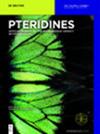绿色荧光蛋白标记人苯丙氨酸羟化酶在网柄菌中表达的流式细胞术定量分析
IF 0.9
4区 医学
Q4 BIOCHEMISTRY & MOLECULAR BIOLOGY
引用次数: 0
摘要
摘要我们开发了一种荧光检测系统来监测人苯丙氨酸羟化酶(hPAH)的蛋白质水平。野生型(WT)和三种突变体hPAH(I65T、L255V和S349L)在盘基网柄菌Ax2的PAH敲除突变体(PAH−)中以绿色荧光蛋白(GFP)标记的形式表达。荧光激活细胞分选(FACS)分析显示,GFP阳性细胞在WT中最常见,但在pah−中很少,这表明GFP标记的hPAHs在网柄菌中成功表达。突变体相对于WT的荧光水平高于从非标记形式确定的蛋白质量的预期,这可能是由于N-末端GFP的存在。然而,用氢过氧化枯烯处理细胞会降低荧光水平,这表明可以通过FACS分析监测单个突变中的蛋白质稳定性变化。在一项评估研究中,通过蛋白质印迹和FACS分析检测了酵母提取物对S349L的假定药理学伴侣作用。酵母提取物提高了蛋白质量和荧光水平,支持FACS分析可以取代耗时费力的程序,如蛋白质印迹和细胞培养。基于荧光的细胞测定系统可能有助于对苯丙酮尿症突变的药理学伴侣进行高通量筛选。本文章由计算机程序翻译,如有差异,请以英文原文为准。
Quantitative analysis by flow cytometry of green fluorescent protein-tagged human phenylalanine hydroxylase expressed in Dictyostelium
Abstract We have developed a fluorescence assay system to monitor the protein levels of human phenylalanine hydroxylase (hPAH). Wild-type (WT) and three mutant hPAHs (I65T, L255V, and S349L) were expressed as green fluorescent protein (GFP)-tagged forms in a PAH knockout mutant (pah−) of Dictyostelium discoideum Ax2. The fluorescence-activated cell sorting (FACS) analysis showed that the GFP positive cells were the most frequent in WT but were rare in pah−, demonstrating the successful expression of GFP-tagged hPAHs in Dictyostelium. The fluorescence levels of mutants relative to WT were higher than expected from the protein amounts determined from the non-tagged forms, probably due to the presence of the N-terminal GFP. However, treatment of the cells with cumene hydroperoxide, which is known to accelerate protein degradation, decreased fluorescence levels, suggesting that protein stability changes in individual mutations can be monitored by FACS analysis. For an evaluation study, a putative pharmacological chaperone effect of yeast extract on S349L was examined by Western blot and FACS analysis. Both the protein amount and the fluorescence levels were increased by yeast extract, supporting that the FACS analysis could replace the time- and labor-consuming procedures such as the Western blot and cell culture. The fluorescence-based cell assay system may be valuable for the high-throughput screening of pharmacological chaperones for phenylketonuria mutations.
求助全文
通过发布文献求助,成功后即可免费获取论文全文。
去求助
来源期刊

Pteridines
生物-生化与分子生物学
CiteScore
1.20
自引率
25.00%
发文量
6
审稿时长
>12 weeks
期刊介绍:
Pteridines is an open acess international quarterly journal dealing with all aspects of pteridine research. Pteridines are heterocyclic fused ring compounds involved in a wide range of biological functions from the color on butterfly wings to cofactors in enzyme catalysis to essential vitamins. Of the pteridines, 5,6,7,8-tetrahydrobiopterin is the necessary cofactor of several aromatic amino acid monoxygenases, the nitric oxide synthases and glyceryl ether monoxygenase (GEMO). Neopterin plays an essential role in the immune system and is an important biomarker in laboratory medicine for diseases such as HIV, cardiovascular disease, malignant tumors, among others.
Topics:
-Neopterin, dihydroneopterin, monapterin-
Biopterin, tetrahydrobiopterin-
Folates, antifolates, riboflavin-
Phenylalanine, tyrosine, phenylketonuria, serotonin, adrenalin, noradrenalin, L-DOPA, dopamine, related biogenic amines-
Phenylalanine hydroxylase, tyrosine hydroxylase, tryptophan hydroxylase, nitric oxide synthases (iNOS), alkylglycerol monooxygenase (AGMO), dihydropterin reductase, sepiapterin reductase-
Homocysteine, mediators of inflammation, redox systems, iron.
 求助内容:
求助内容: 应助结果提醒方式:
应助结果提醒方式:


